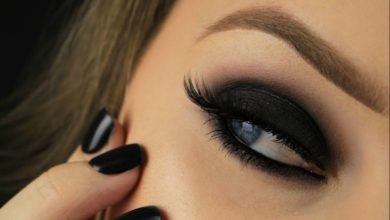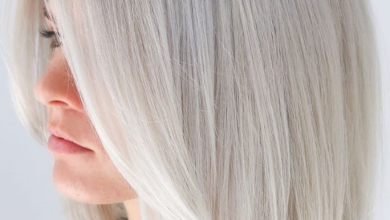For many, exfoliating is an essential part of their skincare routine. It can help us to get gorgeous, glowing skin. But if we pick the wrong exfoliator, it can leave us with redness and irritation, or it might not work at all and just leave us with a dull complexion. Below, we look into the different types of exfoliators, so you can find the right one for your skin type and get radiant skin.
1 What does exfoliating do?
Exfoliating removes dead skin cells. If left on the skin, these dead cells can result in a dull and tired-looking complexion. By removing them, you’ll be left with clean, glowing skin. Removing the layer of dead skin also allows your skincare products to properly penetrate the skin, so they can work much more effectively.
2 Types of exfoliators and how to use them
There are a few different types of exfoliators, which will work in slightly different ways.
Chemical exfoliators
Chemical exfoliators will remove the dead skin cells from your skin using chemicals, just as the name suggests. They will often contain acids like Alpha Hydroxy Acids (AHAs) or Beta Hydroxy Acids (BHAs) that dissolve the bonds between dead skin cells and allow them to be sloughed away. They’re often more gentle than physical exfoliators, although some people with sensitive skin can be irritated by the chemicals.
Chemical exfoliators usually come in a liquid solution. You should first cleanse your face so it’s clean. Then apply the chemical exfoliator onto a cotton pad and gently apply it to your face in circular motions. Rinse it away or leave it on the skin according to the instructions on the product packaging. Follow with your usual toner and moisturizer.
Physical exfoliators
A physical exfoliator will use particles within a skincare product, such as sugar scrubs, or a physical tool, such as a brush, to remove the dead skin cells. Physical exfoliators use friction and pressure to remove dead skin cells. They can be slightly more abrasive, depending on the type of exfoliator, and some can cause redness. Products that contain finer particles will usually be less irritating to the skin.
If you’re using a physical scrub, you should first cleanse your skin. Then gently apply the scrub in circular motions with a light touch to avoid damaging the skin. You can then rinse away the scrub and gently pat your skin dry with a soft towel.
If you’re using a tool, like a brush, you should also start with a cleansed face. Some brushes work best with some cleanser also applied to the brush after you have cleaned your face. Work the brush over your face and neck in circular motions. Once you have brushed your entire face (avoiding the delicate undereye area), you can then rinse away any product with warm water and pat your face dry. You can follow with a toner and then moisturizer.
Exfoliating creams
An exfoliating cream will often combine both chemical and physical exfoliants, so you can reap the benefits of both. They’re usually a less abrasive way of using a physical exfoliator and could use natural ingredients like rice bran to gently resurface the skin and slough away dead skin cells
Exfoliating creams will work in different ways. Some can be applied and left to work as a mask. Others will just need to be buffed into the skin before rinsing away. Other exfoliating creams may need to be left on the skin and not rinsed away at all. Check the instructions for your exfoliating cream carefully.
3 Which exfoliator should I use for my skin type?
Different skin types will see various results from the types of exfoliators.
Dry skin
Chemical exfoliation can often be the better choice for those with dry skin. A physical exfoliator can dry the skin out even more and cause more damage. A chemical or cream exfoliator will remove dead skin cells gently. You could look for a chemical exfoliator that also contains hydrating ingredients, such as argan oil, to help replenish the skin.
Oily skin
Those with oily skin could benefit more from physical exfoliation. Oily skin could see more build-up of excess oils, and a physical exfoliator will be better at removing it. When using a physical exfoliator, you should always use gentle, circular motions so as to not damage the skin.
Combination skin
Combination skin could benefit from both chemical and physical exfoliation. You should look for a product that combines both, such as in an exfoliating cream. You should avoid using a chemical exfoliator and a physical exfoliating tool on the same day, as this could be too abrasive for your skin. You should always follow exfoliation with a moisturizing cream to keep your skin hydrated.
Normal skin
If you find that your skin is neither dry nor oily, then you could benefit from any type of exfoliator. You might need to test out a few different products and methods to find what works best for your skin and skincare routine.
Sensitive skin
Those with sensitive skin should avoid any type of harsh exfoliator, especially physical tools. Look for a gentle chemical exfoliator that won’t irritate your skin or leave it red.
4 How often should I exfoliate?
How often you should exfoliate will depend on your skin type. Those with dry skin and normal to combination skin might prefer to exfoliate once or twice a week. Those with oily skin could benefit from exfoliating more often, up to four times a week. Those with sensitive skin who feel the need to exfoliate should do so only once a week.
How often you exfoliate will also depend on which exfoliator you’re using. A gentle cream exfoliator that you apply and rinse off after buffing might be mild enough to use every day. A physical tool exfoliator will be much more abrasive and shouldn’t be used more than once a week.














